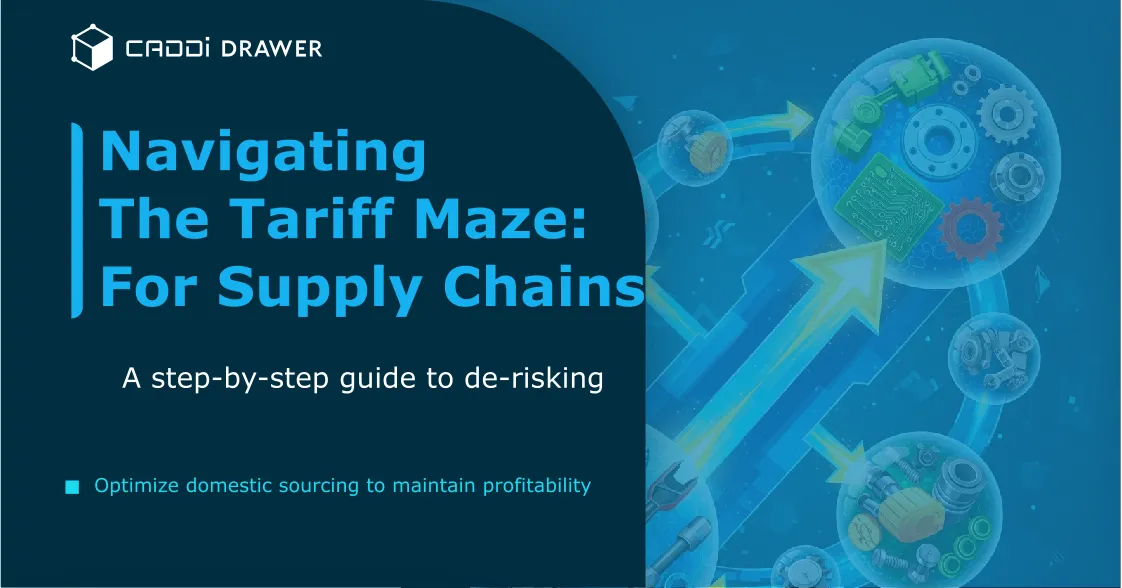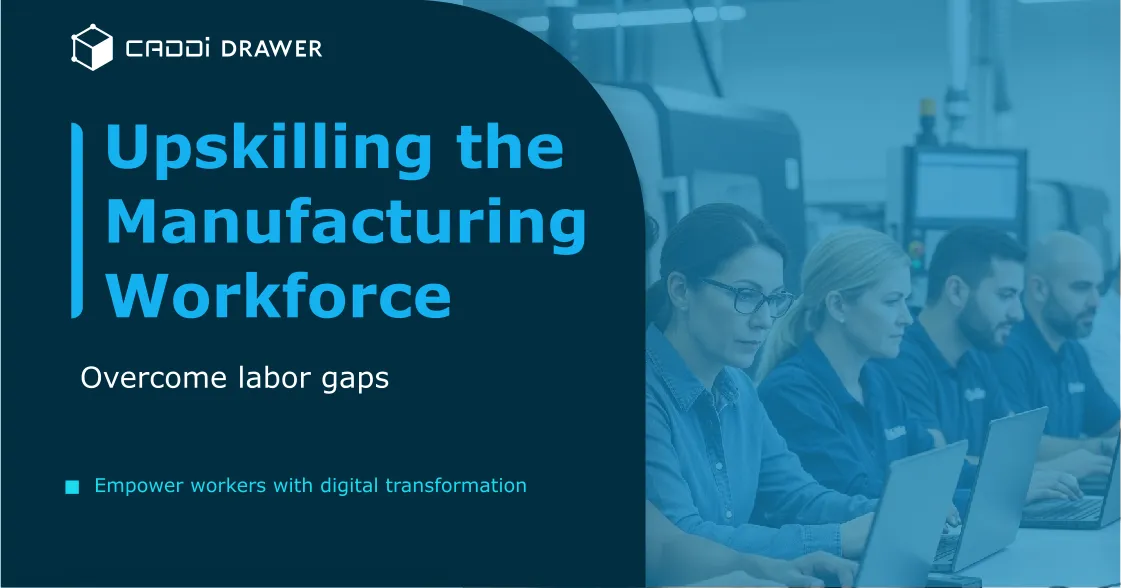Navigating the Tariff Maze: A Step-by-Step Guide to De-Risking Your Supply Chain and Optimizing Domestic Sourcing

Table of Contents

The American manufacturing sector finds itself at a critical juncture, facing significant pressures from intensifying global competition, economic uncertainty, and geopolitical factors like new tariffs. In this complex environment, manufacturing leaders are actively seeking strategies to move from a reactive stance to a proactive one, particularly concerning their supply chains. The ability to navigate these challenges effectively demands agile leadership, continuous adaptation, and a holistic approach to integrating people, processes, and technology.
The Supply Chain Doctrine Shift: From Efficiency to Resilience
For many years, the prevailing supply chain doctrine prioritized pure cost-efficiency, often achieved through globalized, single-source models. However, recent global disruptions have fundamentally shifted this focus towards resilience and risk mitigation. This strategic pivot is evident in several key trends transforming the industry:
- Reshoring and Nearshoring: There is a clear and accelerating trend to bring manufacturing and production closer to home. This movement aims to reduce exposure to international disruptions, shorten lead times, and navigate complex logistics. It presents significant opportunities for domestic small and medium-sized manufacturers (SMMs) to become suppliers for larger Original Equipment Manufacturers (OEMs).
- Supplier Diversification: A core risk mitigation strategy involves actively moving away from single-source dependencies to build more robust and flexible supply bases. This necessitates new processes for discovering, vetting, onboarding, and managing a wider array of suppliers, emphasizing strong supplier relationship management beyond simple transactional interactions.
- Geopolitical and Trade Policy Volatility: The persistent threat of new tariffs and unpredictable trade disputes creates chronic uncertainty. For instance, proposed 2025 tariffs could impose an additional 25% rate on a variety of goods imported from Canada and Mexico, disrupting existing free trade agreements. This forces manufacturers into a reactive posture, diverting focus from growth and innovation towards constant risk analysis and supply-side contingency planning. Retaliatory tariffs from affected countries could further escalate into trade wars.
Challenges of Tariffs and De-risking
The operational impacts of these challenges are widespread. Purchasing teams find themselves scrambling to re-source parts, and engineering departments may be tasked with retrofitting existing designs to work with different components due to tariffs. This can lead to significant and rapid operational adjustments. Furthermore, there are prevalent concerns about potential layoffs and a reduction in new design work, indicating a slowdown in innovation and expansion within some firms. Export-oriented heavy machinery manufacturers face tangible losses as foreign customers cancel orders. Engineers highlight that industrial supply chains are inherently global, with critical components often sourced internationally, making rapid reshoring difficult.
A major bottleneck in reshoring efforts is the difficulty and time-consuming nature of identifying and qualifying new domestic suppliers, especially for custom and legacy parts. The required knowledge is often inadequately distributed, residing in silos known only by specific individuals, making data technically available but not easily accessible across different teams.
Steps to De-Risk and Optimize Domestic Sourcing
To address these challenges, manufacturers can implement a multi-step process for de-risking and optimizing domestic sourcing:
- Conduct a Comprehensive Impact Assessment: Begin by identifying which parts and suppliers are most at risk from tariffs or other disruptions. This involves analyzing your company's data to identify key activities that drive costs.
- Analyze Total Cost of Ownership (TCO): Beyond unit price, consider all relevant costs when comparing reshoring versus offshoring. This includes direct production costs, purchasing costs, holding costs, transaction costs, and hidden costs such as tariffs, transportation, and the need for buffer stocks.
- Develop Diversified Sourcing Strategies: Actively reduce dependency on single suppliers by building a diversified supplier base. This helps mitigate risks associated with geopolitical tensions, supply chain disruptions, and market volatility. It is also important to maintain a certain level of local supplier networks.
- Execute a Domestic Sourcing Strategy: Focus on finding and qualifying new domestic suppliers for your specific needs. This often requires proactively seeking out new suppliers with unique technologies or skill sets. While the process of identifying and qualifying new domestic suppliers for custom and legacy parts can be a significant bottleneck, especially given the fragmented operational environment, overcoming this is crucial.
How CADDi Can Help
CADDi provides an AI data platform for manufacturing that can significantly assist in navigating the tariff maze and optimizing domestic sourcing efforts. CADDi functions as a data lake, aggregating and linking data from various sources like ERP, PLM, CAD, and spreadsheets, consolidating all manufacturing information in one accessible place. This unified view allows teams to overcome data silos and leverage hidden commonalities across their parts catalog.
CADDi's proprietary AI and patented technology enhance this process in several ways:
- Digitizing and Analyzing Drawing Data: CADDi can digitize and analyze entire libraries of part drawings, including old scanned documents and handwritten notes, making them fully searchable and comparable. This capability allows a company to quickly understand its own manufacturing needs in granular detail.
- Intelligent Search and Data Linking: Users can instantly find relevant drawings based on various criteria, including shape-based similarity search. This allows procurement managers to find historically similar parts and analyze their cost data to establish a data-backed benchmark for new parts, transforming negotiation into a data-driven science.
- Empowering Supplier Selection and Negotiation: By connecting quotation data, costs, supplier information, and quality reports to drawings, CADDi allows teams to make more informed decisions when selecting and negotiating with suppliers. This enhanced visibility helps identify price inconsistencies, enabling focused negotiation and the ability to find cheaper alternatives without sacrificing quality.
- Facilitating Standardization and Consolidation: The similarity search feature helps identify redundant parts and opportunities for supplier consolidation, which can lead to better economies of scale and improved quality control by leveraging larger bulk orders. It also helps create more attractive order packages for potential new domestic partners, potentially offsetting higher domestic production costs.
- Accelerating Onboarding and Knowledge Transfer: By centralizing and structuring institutional knowledge, CADDi reduces reliance on individual memory and experience, allowing new hires to become productive faster.
With CADDi, manufacturers can gain the knowledge, flexibility, and agility required to navigate today's uncertain supply chain landscape and confidently pursue domestic sourcing initiatives.
Ready to see how CADDi can navigate the chaos and complexity of sourcing in the tariff era? Explore our interactive product tour or book a personalized demo.
The American manufacturing sector finds itself at a critical juncture, facing significant pressures from intensifying global competition, economic uncertainty, and geopolitical factors like new tariffs. In this complex environment, manufacturing leaders are actively seeking strategies to move from a reactive stance to a proactive one, particularly concerning their supply chains. The ability to navigate these challenges effectively demands agile leadership, continuous adaptation, and a holistic approach to integrating people, processes, and technology.
The Supply Chain Doctrine Shift: From Efficiency to Resilience
For many years, the prevailing supply chain doctrine prioritized pure cost-efficiency, often achieved through globalized, single-source models. However, recent global disruptions have fundamentally shifted this focus towards resilience and risk mitigation. This strategic pivot is evident in several key trends transforming the industry:
- Reshoring and Nearshoring: There is a clear and accelerating trend to bring manufacturing and production closer to home. This movement aims to reduce exposure to international disruptions, shorten lead times, and navigate complex logistics. It presents significant opportunities for domestic small and medium-sized manufacturers (SMMs) to become suppliers for larger Original Equipment Manufacturers (OEMs).
- Supplier Diversification: A core risk mitigation strategy involves actively moving away from single-source dependencies to build more robust and flexible supply bases. This necessitates new processes for discovering, vetting, onboarding, and managing a wider array of suppliers, emphasizing strong supplier relationship management beyond simple transactional interactions.
- Geopolitical and Trade Policy Volatility: The persistent threat of new tariffs and unpredictable trade disputes creates chronic uncertainty. For instance, proposed 2025 tariffs could impose an additional 25% rate on a variety of goods imported from Canada and Mexico, disrupting existing free trade agreements. This forces manufacturers into a reactive posture, diverting focus from growth and innovation towards constant risk analysis and supply-side contingency planning. Retaliatory tariffs from affected countries could further escalate into trade wars.
Challenges of Tariffs and De-risking
The operational impacts of these challenges are widespread. Purchasing teams find themselves scrambling to re-source parts, and engineering departments may be tasked with retrofitting existing designs to work with different components due to tariffs. This can lead to significant and rapid operational adjustments. Furthermore, there are prevalent concerns about potential layoffs and a reduction in new design work, indicating a slowdown in innovation and expansion within some firms. Export-oriented heavy machinery manufacturers face tangible losses as foreign customers cancel orders. Engineers highlight that industrial supply chains are inherently global, with critical components often sourced internationally, making rapid reshoring difficult.
A major bottleneck in reshoring efforts is the difficulty and time-consuming nature of identifying and qualifying new domestic suppliers, especially for custom and legacy parts. The required knowledge is often inadequately distributed, residing in silos known only by specific individuals, making data technically available but not easily accessible across different teams.
Steps to De-Risk and Optimize Domestic Sourcing
To address these challenges, manufacturers can implement a multi-step process for de-risking and optimizing domestic sourcing:
- Conduct a Comprehensive Impact Assessment: Begin by identifying which parts and suppliers are most at risk from tariffs or other disruptions. This involves analyzing your company's data to identify key activities that drive costs.
- Analyze Total Cost of Ownership (TCO): Beyond unit price, consider all relevant costs when comparing reshoring versus offshoring. This includes direct production costs, purchasing costs, holding costs, transaction costs, and hidden costs such as tariffs, transportation, and the need for buffer stocks.
- Develop Diversified Sourcing Strategies: Actively reduce dependency on single suppliers by building a diversified supplier base. This helps mitigate risks associated with geopolitical tensions, supply chain disruptions, and market volatility. It is also important to maintain a certain level of local supplier networks.
- Execute a Domestic Sourcing Strategy: Focus on finding and qualifying new domestic suppliers for your specific needs. This often requires proactively seeking out new suppliers with unique technologies or skill sets. While the process of identifying and qualifying new domestic suppliers for custom and legacy parts can be a significant bottleneck, especially given the fragmented operational environment, overcoming this is crucial.
How CADDi Can Help
CADDi provides an AI data platform for manufacturing that can significantly assist in navigating the tariff maze and optimizing domestic sourcing efforts. CADDi functions as a data lake, aggregating and linking data from various sources like ERP, PLM, CAD, and spreadsheets, consolidating all manufacturing information in one accessible place. This unified view allows teams to overcome data silos and leverage hidden commonalities across their parts catalog.
CADDi's proprietary AI and patented technology enhance this process in several ways:
- Digitizing and Analyzing Drawing Data: CADDi can digitize and analyze entire libraries of part drawings, including old scanned documents and handwritten notes, making them fully searchable and comparable. This capability allows a company to quickly understand its own manufacturing needs in granular detail.
- Intelligent Search and Data Linking: Users can instantly find relevant drawings based on various criteria, including shape-based similarity search. This allows procurement managers to find historically similar parts and analyze their cost data to establish a data-backed benchmark for new parts, transforming negotiation into a data-driven science.
- Empowering Supplier Selection and Negotiation: By connecting quotation data, costs, supplier information, and quality reports to drawings, CADDi allows teams to make more informed decisions when selecting and negotiating with suppliers. This enhanced visibility helps identify price inconsistencies, enabling focused negotiation and the ability to find cheaper alternatives without sacrificing quality.
- Facilitating Standardization and Consolidation: The similarity search feature helps identify redundant parts and opportunities for supplier consolidation, which can lead to better economies of scale and improved quality control by leveraging larger bulk orders. It also helps create more attractive order packages for potential new domestic partners, potentially offsetting higher domestic production costs.
- Accelerating Onboarding and Knowledge Transfer: By centralizing and structuring institutional knowledge, CADDi reduces reliance on individual memory and experience, allowing new hires to become productive faster.
With CADDi, manufacturers can gain the knowledge, flexibility, and agility required to navigate today's uncertain supply chain landscape and confidently pursue domestic sourcing initiatives.
Ready to see how CADDi can navigate the chaos and complexity of sourcing in the tariff era? Explore our interactive product tour or book a personalized demo.
.svg)



.svg)
.svg)
.svg)









